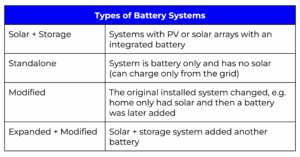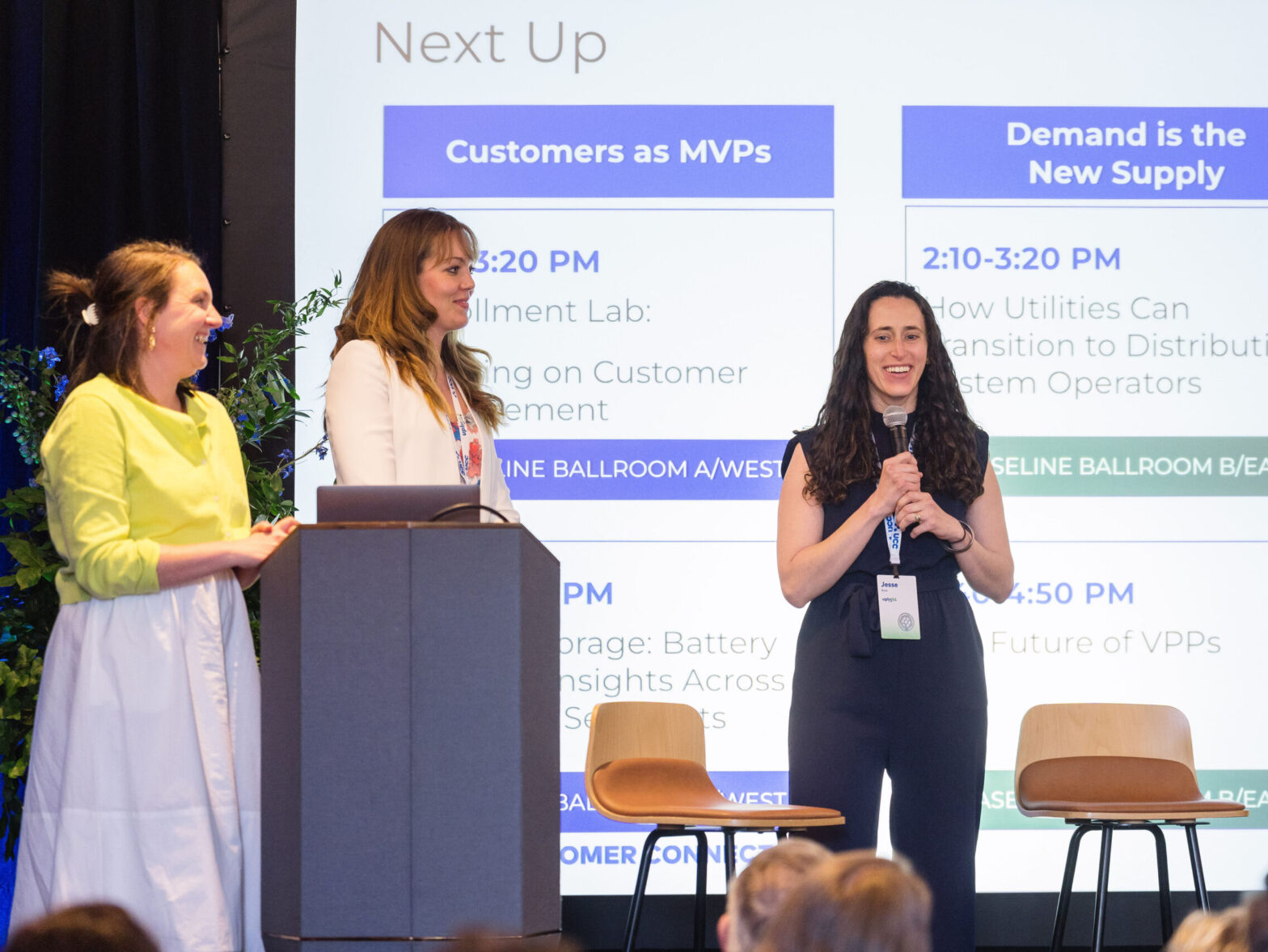Battery energy storage systems (BESS) are revolutionizing grid management across the United States, with California leading the way through innovative demand response programs that compensate residential customers for their participation. As extreme weather events increase and grid reliability concerns accelerate, American homeowners are increasingly turning to BESS as a solution for energy independence and resilience. In turn, more regions are developing their own battery programs to enhance grid reliability while offering compelling incentives for homeowners.
The Growth of BESS
California, long at the forefront of distributed energy resource (DER) adoption, continues to lead this transformation, but other states are rapidly developing innovative demand response (DR) programs driven by supportive policies and incentives, increasing grid reliability concerns due to extreme weather events, and the integration of variable renewable energy sources.
The landscape of residential battery demand response has evolved dramatically over the past few years, driven by a perfect storm of factors. California’s Emergency Load Reduction Program (ELRP) allows residential customers with batteries to be compensated for reducing load during grid emergencies. In addition, multiple California utilities have launched their own virtual power plant (VPP) programs that enable customers to earn incentives by allowing their batteries to automatically dispatch during peak demand periods.
Beyond California, other states are crafting their own paths toward integrating residential batteries into the grid. In Massachusetts, Mass Save’s Connected Solutions program provides a $275 per kW incentive for customers to allow their batteries to be dispatched during peak demand events. New York’s Dynamic Load Management programs include several battery-specific offerings where customers can participate in DR with their energy storage systems. Hawaiian Electric has also integrated batteries into its various DR programs, with requirements for new battery installations to be grid-interactive to support system reliability.
Battery Technology Advancements and Economic Incentives
Battery systems have become increasingly sophisticated in their ability to respond to grid signals while maintaining backup power reserves for homeowner needs. Integration with utility Distributed Energy Resource Management Systems (DERMS) platforms allows for automated dispatch during grid events, while smart inverters enable precise control over battery charging and discharging.
Economic factors are equally compelling. DR programs typically offer both upfront incentives and ongoing performance payments for battery participation. The federal Investment Tax Credit, when combined with DR program revenues, has helped improve the economics of these systems. Some utilities, like Green Mountain Power, are even launching bring your own device (BYOD) programs that allow customers with existing batteries to enroll in grid services.
Considerations for Implementing a Battery Program
For those looking to take advantage of economics, technological advances, and the flexibility of this distributed resource, implementing a battery program requires a tailored approach based on regional policies, utility rules, and market dynamics. Coordination with stakeholders, including the permission to operate (PTO) team, and understanding customer incentives are key to ensuring smooth execution and program success.
Understand Permission to Operate (PTO) Requirements
From implementing programs in different states and territories, Uplight has learned firsthand the PTO with the grid requirements vary greatly. Some utilities require PTO for all systems (with solar, standalone, and expanded or modified systems) while some do not require it for standalone systems. Programs need to clarify utility rules, assess the installer network’s understanding, and determine if eligibility criteria will vary. Collecting this information during the design stage will bring key stakeholders into the discussion early to inform design and make necessary changes within the utility organization across the teams. Delaying this design phase until implementation poses risks, potentially causing delays, confusion, and mismanagement.

Another PTO factor to consider is whether export—discharging stored energy back to the grid or an external system—is allowed and how it is permitted. Again, some utilities only allow export if explicitly included in the PTO, while others allow customers and installers to configure export or not, as desired, without modifying their PTO. The structure in place will affect the program’s ability to forecast effectively as well as the customer’s charging experience between events.
Prioritize the Customer Experience
Participating battery manufacturers will have different charging options before and after an event; some will generally adhere to the customer’s settings while others will prioritize the grid event and enable grid charging. This becomes more sensitive during the winter when solar production is lower. Many customers will likely recharge from the grid more than they would if not participating in the program.
This feeds into one of the most complicated aspects of the program and relates back to the need for close coordination across teams— how do these events affect the customers’ Net Energy Metering (NEM) “banks”? NEM enables customers to store excess energy via solar panels or batteries and use it to off-set their bills by banking credits.
There is no one-size-fits-all answer due to the factors mentioned above (is grid charging allowed or not; is solar present or not), the size of the battery systems, and energy use in the home during the events. Fundamentally, customers want to understand how these additional battery events, aside from regular usage, and additional charging from the grid will increase or decrease their NEM bank.
Create Effective Incentive Structures
Incentives are a critical piece of the customer experience and battery adoption. Customers understandably want to ensure that, between their NEM bank and program incentives, they come out ahead—especially if they are incurring charging costs on behalf of the utility.
We recommend an enrollment incentive plus a participation incentive, as well as separating DR incentives from those designed to drive installations. Ultimately, the program team should craft an incentive structure that will support the future of the program, namely retain customer participation and encourage reliable capacity year over year. This generally points to a scalable incentive based on capacity enrolled and capacity delivered in events, i.e. pay for performance, ensuring equity across battery sizes independent of manufacturers and across participants. The good news is that incentives are not locked in. Amounts and thresholds can easily be adjusted as needed as the program matures without revamping the whole structure.
To set these levels, program teams should take input from participating manufacturers and the local trade ally network to understand where the market is as well as to set a baseline for performance incentives.
Keep in Mind the Manufacturer
Different battery manufacturers will have different setups for the customer. Various manufacturer restrictions will affect battery program design. Some will offer customers more flexibility to opt out of events and some might even limit when the program can dispatch. For example, many manufacturers have storm or weather modes that will prevent dispatch. Being informed about these nuances during program design will inform decisions and how customers might be measured.
Create a Collaborative Organization
Program implementers may initially underestimate the level of coordination required between the program team and other entities, such as PTO, NEM, and external groups like the trade ally network. Gathering these teams early on to collect information is critical to define clear program eligibility, understand the customer experience and economics, and set up an incentive framework that will carry through the duration of the program. Investing time upfront will save headaches downstream and contribute to a better customer experience, the key to any successful program.
The Residential Battery Future is Bright
FERC Order 2222 compliance is driving the development of new market opportunities for DERs, including batteries. Integration with sophisticated aggregation platforms is becoming standard, allowing for more intelligent dispatch of residential fleet resources. The increasing focus on grid resilience and decarbonization points to a continued expansion of these programs across more utilities and states.
Batteries are an extremely valuable resource, if utilities prioritize thoughtful program design, cross-team collaboration, and customer-centric incentive structures— positioning themselves to maximize grid benefits while ensuring positive customer experiences.





